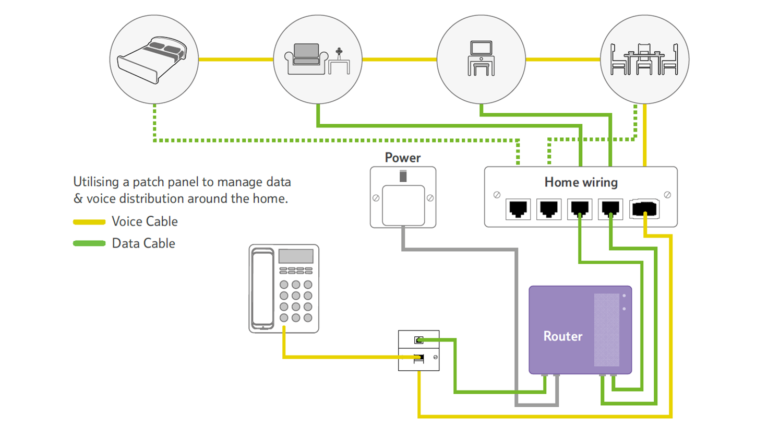January 20, 2017
Although the wireless network becomes more and more popular for its convenience, most of our home still deploy wired connections with copper based devices that can work faster and more stable. Every so often, we get questions from people who plan to deploy copper based networks in their homes. The most frequent question we get is, "how to fast build a copper network at home?" Considering that, the following will give detailed instructions for building a copper home network in a very fast and smooth manner.
As the copper based network has an important place in the our daily life, it is very necessary to know the steps for deploying our own copper based network that is much easier than that of the fiber based network. Of course, before deploying, you should consider your requirements for the copper based network, such as, easier access to broadband and WiFi, higher network performance. Then let’s study the step by step instructions for building a copper network at home.
Bringing the Service Provider Distribution Cable to Your HomeNowadays, the distribution point of copper network cable or fiber optic cable is always installed inside or near the building by the broadband service provider, offering service for each house of the building. In some old buildings, the cables between the end users and distribution point are still copper based, while fiber optic based cables are usually used in the new buildings. If you are living in a new building with fiber optic based distribution point, then you need a ONU (Optical Network Unit) for converting the optical signals into electrical signals and distribute the signals to different ports and home devices. Hence, the service provider distribution cable can be brought to your home. At present, there are various ONUs and routers available on the market, supporting WiFi and satisfying various port requirements. If your home is not very big, you just need to choose one ONU or router for your home network.
Wiring the Whole Connection for Your HomeAfter introducing the service provider distribution cable to your home, you should decide how many ports your home network requires and how many devices should be connected to the network, which is very important for owning a home wired network with great broadband access. Due to the good preparation, you can do the whole home wiring smoothly without any delay. The following figure shows an example of the whole home wiring that connects the bedroom, living room, office and dining room of this house to the network for your reference.

From the figure above, you can learn that there are several kinds of devices, such as, televisions and telephone, connected to the home wired network for better and smarter performance, which is also know as smart home. For instance, the voice cable is used for connecting the telephone to the network, so that the phone calls would be not missed by the house owner. Besides, other devices like air condition, light control device can be also connected to the home wired network for living in a smart home.
As for the types of the copper cables used for the connections between the network and the home devices, the Cat 5e and Cat 6 Ethernet cable are most commonly used copper based patch cables at present that completely satisfy the requirements of your network. However, the Cat 6a and Cat 7 Ethernet cable are more recommendable with higher performance which are capable of meeting the requirements for both now and future.
Terminating the Copper Cables and Finishing the Whole DeploymentThe third step is to terminate the copper cables that used for the whole connection, which plays an important role in deploying a secure and reliable wired home network. In general, the copper patch cable is suggested to be terminated at the wall plate port and a length of RJ45 copper network patch cable should be used for connecting the port with target device, thereby the whole deployment of home network can be finished.
This paper mainly studies the process of how to fast build a copper network at home, which is very useful for people who plan to deploy a copper home network for better performance. In strict accordance with the step by step instructions, you can easily and fast deploy your wired home network. Except that, choosing the most suitable patch cable also can’t be ignored for good broadband access. You can choose one of the most suitable patch cable from the mentioned above Cat 5e, Cat 6, Cat 6a and Cat 7 Ethernet cable to meet the requirements of your network.
Posted by: katherinewangfs at
07:14 AM
| No Comments
| Add Comment
Post contains 781 words, total size 6 kb.
35 queries taking 0.1876 seconds, 65 records returned.
Powered by Minx 1.1.6c-pink.









